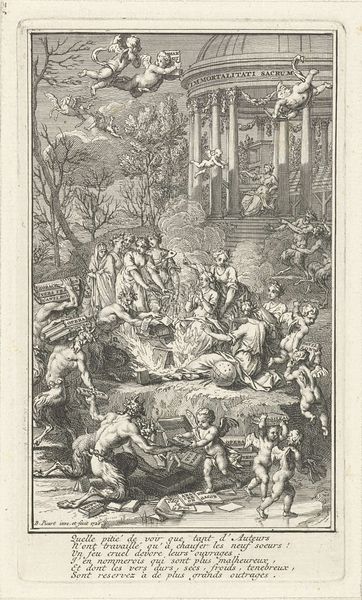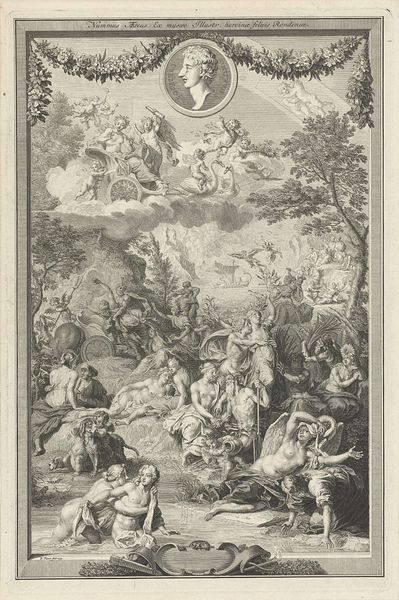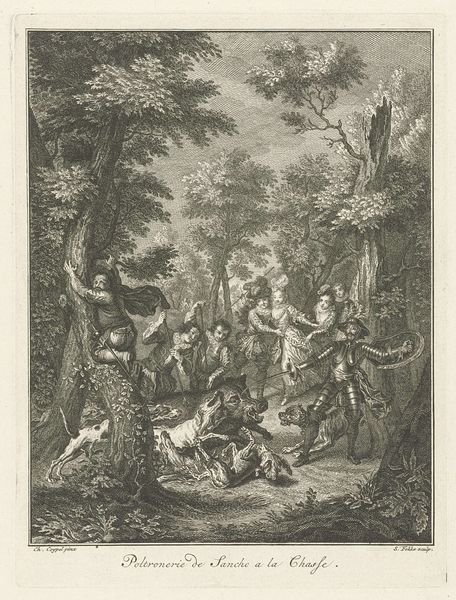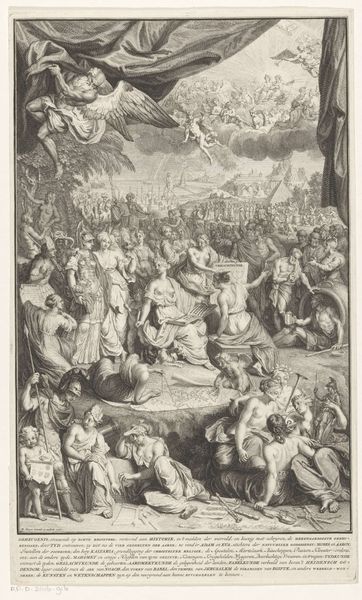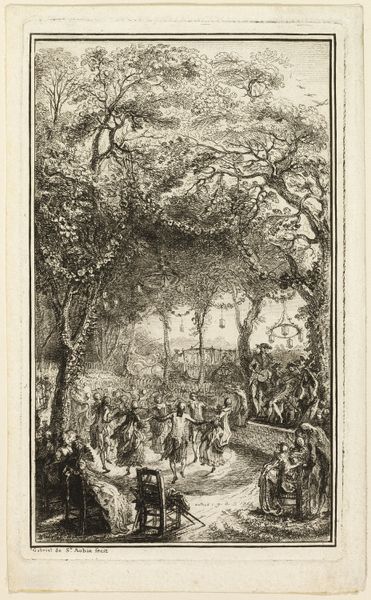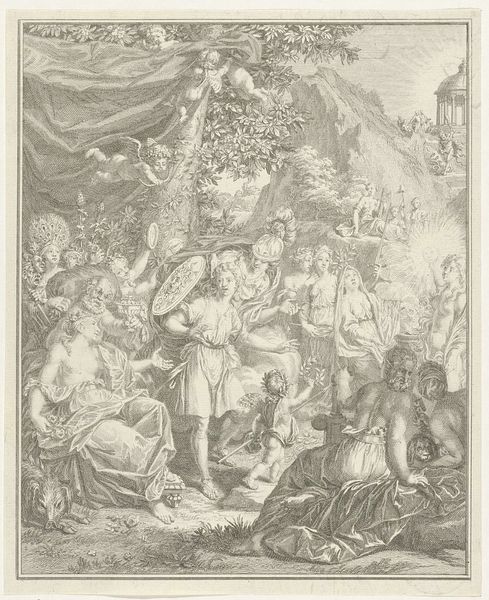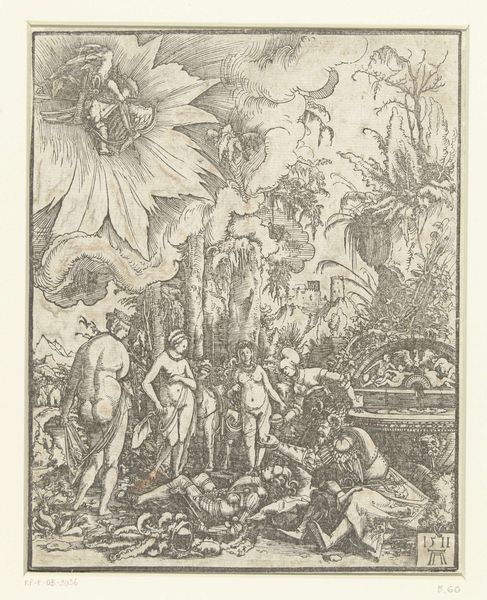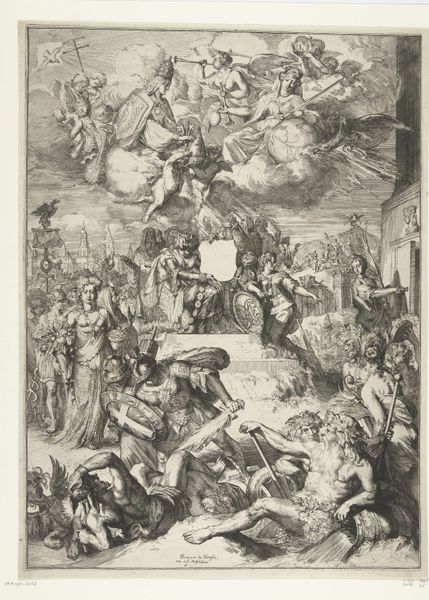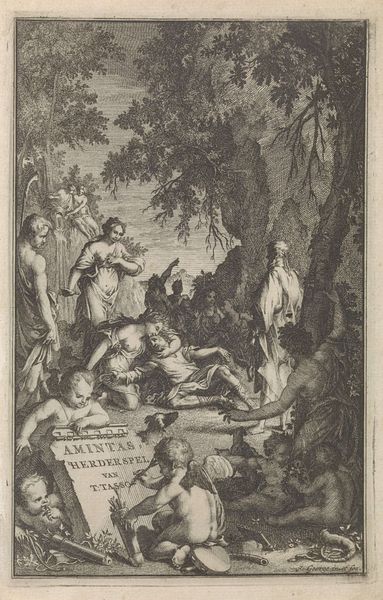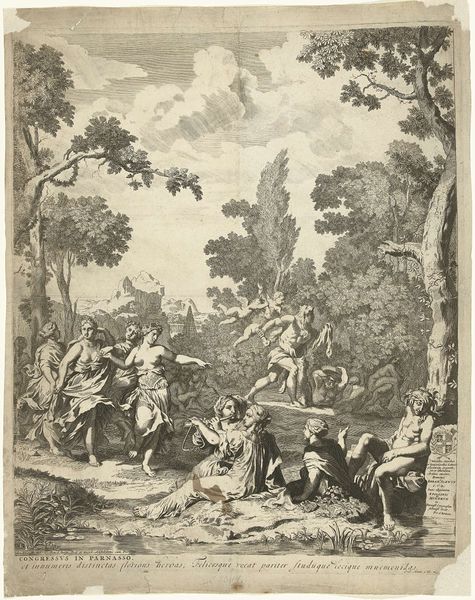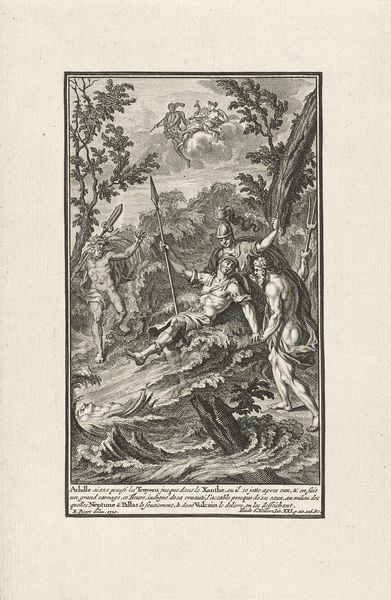
Allegorische voorstelling met de muzen die zich verwarmen aan het vuur van slechte boeken 1720
0:00
0:00
etching
#
allegory
#
baroque
#
etching
#
landscape
#
figuration
#
line
#
history-painting
Dimensions: height 152 mm, width 83 mm
Copyright: Rijks Museum: Open Domain
Editor: Here we have Bernard Picart’s "Allegorical Representation of the Muses Warming Themselves at the Fire of Bad Books", an etching from 1720. It's fascinating to see this bonfire of books with muses gathered around, almost as if the destruction of knowledge brings them warmth. How can we understand this scene in its historical moment? Curator: The image, etched with fine lines characteristic of the Baroque, presents a rather loaded socio-political statement through allegory. The burning of books—consider the long and fraught history of censorship and book-burnings—suggests a rejection of certain knowledge, likely those seen as challenging the established order. Who determines what constitutes a "bad" book and the implications that follow? Editor: So, the muses huddling around the fire… is it then an endorsement of a specific form of artistic expression? Almost as though some forms of creativity can only flourish with the censorship of others? Curator: Precisely. We might interpret it as promoting certain classical or academic standards over what was perceived as unruly, subversive, or heretical ideas in the 18th century. Think about the role of the French Royal Academy or the policing of theatrical expression at the time; power often dictates taste and legitimizes itself by denouncing its others. What’s also important is the public consumption of imagery like this. Was this meant to educate, to entertain, or to enforce certain socio-political values? Editor: It's interesting to think about it in terms of legitimization. The figures surrounding the fire are allegorical, but also reflect the values of specific cultural institutions and figures. Curator: Indeed, considering the role of institutions in shaping artistic taste helps unpack the intended meaning behind works like this, rather than merely taking it as a literal scene. Art isn't created in a vacuum. Editor: Right! Understanding its place within the structures of its time changes everything. Curator: Exactly. History offers a crucial lens to contextualize the visual language and cultural function of this image.
Comments
No comments
Be the first to comment and join the conversation on the ultimate creative platform.
